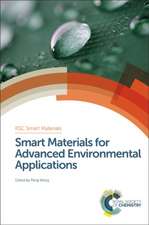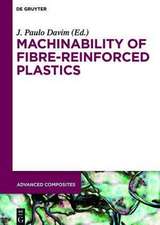PEDOT: Principles and Applications of an Intrinsically Conductive Polymer
Autor Andreas Elschner, Stephan Kirchmeyer, Wilfried Lovenich, Udo Merker, Knud Reuteren Limba Engleză Hardback – 2 noi 2010
An indispensable resource for researchers, developers, and users of PEDOT—written by the researchers who succeeded in commercializing it
A necessary response to the massive interest—as well as patents and papers—spawned by PEDOT, this handbook provides basic knowledge and explores technical applications, based on information generated by universities and academic research, as well as by industrial scientists. Available in various formulations and conductivities, this versatile PEDOT can be adapted for the needs and specific industrial applications of its different users. Although valuable information exists in handbooks on polythiophene chemistry and physics, under which PEDOT falls, until now, few if any books have focused exclusively on this important conducting polymer—certainly not one that so completely elucidates both its experimental and practical aspects.
This book:
- Begins with a brief history of conducting polymers and polythiophenes
- Describes the invention of PEDOT and its commercial outgrowth, PEDOT:PSS
- Emphasizes key technical and commercial aspects and usage of PEDOT and how they have stimulated scientific research in a wide range of fields
- Explains the chemical and physical background for PEDOT in terms of its primary use and incorporation in products including cellular phones and flat panel displays
Preț: 1551.92 lei
Preț vechi: 1892.58 lei
-18% Nou
Puncte Express: 2328
Preț estimativ în valută:
296.99€ • 322.49$ • 249.48£
296.99€ • 322.49$ • 249.48£
Carte tipărită la comandă
Livrare economică 22 aprilie-06 mai
Preluare comenzi: 021 569.72.76
Specificații
ISBN-13: 9781420069112
ISBN-10: 142006911X
Pagini: 378
Ilustrații: 2 equations; 23 Tables, black and white; 238 Illustrations, black and white
Dimensiuni: 156 x 234 x 24 mm
Greutate: 0.66 kg
Ediția:1
Editura: CRC Press
Colecția CRC Press
Locul publicării:United States
ISBN-10: 142006911X
Pagini: 378
Ilustrații: 2 equations; 23 Tables, black and white; 238 Illustrations, black and white
Dimensiuni: 156 x 234 x 24 mm
Greutate: 0.66 kg
Ediția:1
Editura: CRC Press
Colecția CRC Press
Locul publicării:United States
Public țintă
ProfessionalCuprins
The Discovery and Development of Conducting Polymers. Conductive Polymers versus Metals and Insulators. Polythiophenes: A Chance for Maximum Conductivity? A Short History of the PEDOT Invention. The Synthesis of EDOT Monomer, and Its Physical and Chemical Properties. From EDOT to PEDOT: Oxidative Polymerization and Other Routes. Counterions for PEDOT. The In Situ Polymerization of EDOT to PEDOT. PEDOT: PSS. Applications. Technical Use and Commercial Aspects. EDOT and PEDOT Derivatives with Covalently Attached Side Groups. XDOTs, EDXTs, EDOXs, and 2(5)-X(2)-EDOTs: Ring Size Variations, Heteroanalogs, and Derivatives of EDOT with Substituents at the Thiophene Ring. The Electrochemical Behavior of EDOT and PEDOT.
Notă biografică
Andreas Elschner, Ph.D., was educated as a solid-state physicist at the University of Marburg (Germany) where he received his Ph.D. in 1988. Following a postdoctoral year at Stanford University (California) he joined Bayer AG in 1990, and has been with H.C. Starck since 2002. Dr. Elschner’s research focus is on organic electronics and he is responsible for testing and characterizing organic devices and conducting polymers.
Stephan Kirchmeyer Ph.D., studied chemistry from 1978 to 1984 at the University of Hamburg (Germany) and at the University of Southern California in Los Angeles. Until 2001, Dr. Kirchmeyer worked as a researcher for IBM and Bayer AG. In 2002, he joined H.C. Starck GmbH and since then has held several responsible positions for H.C. Starck’s business with conductive polymers and electronic materials.
Wilfried Lövenich, Ph.D., received his diploma in chemistry from the Technical University of Aachen (Germany). He then went to the University of Durham, Great Britain, to obtain his Ph.D. In 2002, Dr. Lövenich joined H.C. Starck, working as an R&D chemist on the development and pilot plant production of the conductive polymer PEDOT. Since 2009, Dr. Lövenich has been the head of the R&D group of H.C. Starck Clevios GmbH.
Udo Merker, Ph.D., studied physics at the University of Bonn (Germany) from 1989 to 1994. He received his Ph.D. in 1998 for studies in molecular spectroscopy at the University of Bonn and Princeton University (New Jersey). From 1998 to 1999, Dr. Merker was a postdoctorate at the Chemistry Department of Princeton University. In 1999, he joined the corporate research division of Bayer AG to work on the development of electronic materials. From 2002 until 2008, Dr. Merker was responsible for the development of new materials and processes for electrolytic capacitors in the central R&D division of H.C. Starck GmbH. Since 2009, he has been the head of the application technology group of H.C. Starck Clevios GmbH.
Knud Reuter, Ph.D., studied chemistry from 1969 to 1974 at the University of Dortmund (Germany) where he received his doctoral degree with a thesis in organometallic chemistry in 1977. In the same year, Dr. Reuter started his professional work as a member of a polymer research group at Bayer AG. Since 2000, he has worked on PEDOT chemistry, joining H.C. Starck GmbH in 2002.
Stephan Kirchmeyer Ph.D., studied chemistry from 1978 to 1984 at the University of Hamburg (Germany) and at the University of Southern California in Los Angeles. Until 2001, Dr. Kirchmeyer worked as a researcher for IBM and Bayer AG. In 2002, he joined H.C. Starck GmbH and since then has held several responsible positions for H.C. Starck’s business with conductive polymers and electronic materials.
Wilfried Lövenich, Ph.D., received his diploma in chemistry from the Technical University of Aachen (Germany). He then went to the University of Durham, Great Britain, to obtain his Ph.D. In 2002, Dr. Lövenich joined H.C. Starck, working as an R&D chemist on the development and pilot plant production of the conductive polymer PEDOT. Since 2009, Dr. Lövenich has been the head of the R&D group of H.C. Starck Clevios GmbH.
Udo Merker, Ph.D., studied physics at the University of Bonn (Germany) from 1989 to 1994. He received his Ph.D. in 1998 for studies in molecular spectroscopy at the University of Bonn and Princeton University (New Jersey). From 1998 to 1999, Dr. Merker was a postdoctorate at the Chemistry Department of Princeton University. In 1999, he joined the corporate research division of Bayer AG to work on the development of electronic materials. From 2002 until 2008, Dr. Merker was responsible for the development of new materials and processes for electrolytic capacitors in the central R&D division of H.C. Starck GmbH. Since 2009, he has been the head of the application technology group of H.C. Starck Clevios GmbH.
Knud Reuter, Ph.D., studied chemistry from 1969 to 1974 at the University of Dortmund (Germany) where he received his doctoral degree with a thesis in organometallic chemistry in 1977. In the same year, Dr. Reuter started his professional work as a member of a polymer research group at Bayer AG. Since 2000, he has worked on PEDOT chemistry, joining H.C. Starck GmbH in 2002.
Descriere
While there is information available in handbooks on polythiophene chemistry and physics, few if any books have focused exclusively on the most forwardly developed electrically conductive polymer, Poly (3,4-ethylenedioxythiophene)—otherwise known as PEDOT. This resource provides full chemical, physical, and technical information about this important conducting polymer, discussing basic knowledge and exploring its technical applications. Based on information generated through academic research as well as by industrial scientists, this book provides a complete picture of the experimental and the practical aspects of this important polymer.






















